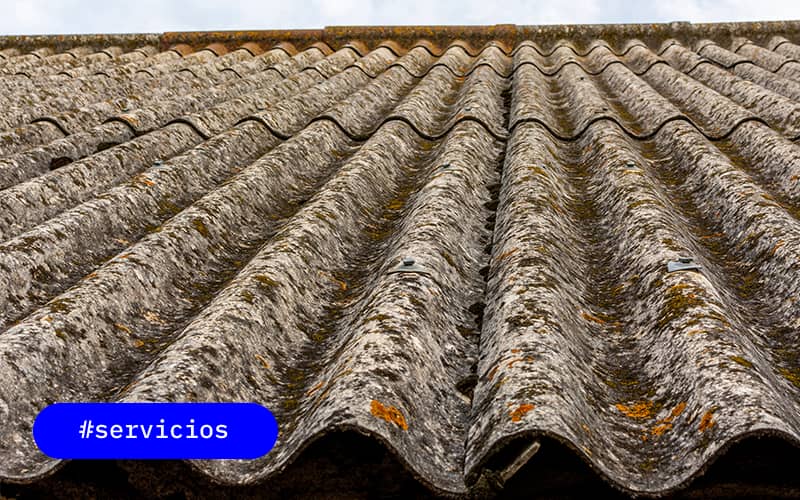We manage the presence of asbestos in buildings and structures, in this way we will explain in depth the way in which we manage it in order to expose our service a little more. We explain below how it is possible to detect the presence of this dangerous mineral without the need for intrusive interventions.
What is asbestos and why is it important to detect it?
Asbestos, or asbestos, is a group of natural fibrous minerals that have been widely used in various industries due to their unique properties, such as heat resistance, electrical insulation, and durability. This has been used in the manufacturing of products such as building materials, automotive components, textiles, chemicals and more.
However, asbestos poses serious health risks, which led to its ban. When asbestos fibers break off and become inhalable, they can enter the lungs and cause significant damage over time. That is why it is important to detect it and manage it properly. Asbestos detection involves identifying the presence and concentration of asbestos fibers in the air, in materials and in the environment in general.
Law 7/2022, of April 8, on waste and contaminated soils for a circular economy , requires that municipalities must prepare a census of facilities and sites with asbestos, including a calendar that plans its removal.
What is satellite remote sensing?
This type of remote sensing is a technology that allows the acquisition of information about the Earth and its characteristics through satellites in orbit. It uses sensors installed on these satellites to capture electromagnetic radiation, such as visible and infrared light, emitted or reflected by the Earth’s surface. The information collected is processed and analyzed to obtain data on aspects such as vegetation, climate, topography, water quality and changes in land use, among others.
It has a great capacity to provide information on a large scale and in near real time, which is essential in applications such as environmental monitoring, natural disaster management, precision agriculture, urban planning and natural resource monitoring. Satellite remote sensing allows us to obtain a global and detailed perspective of our planet, which facilitates informed decision-making in various fields.
What is asbestos remote sensing?
Asbestos remote sensing consists of a technique that uses very high spatial resolution (VHR) satellite images to detect the presence of asbestos in buildings and structures. Asbestos, known for its health risks, has long been a challenge in terms of detection and monitoring. However, thanks to remote sensing, we can now geolocate asbestos roofs without the need to physically access the structures.
Thanks to the use of satellite images we can identify the presence of asbestos in buildings and structures and track this in real time. Its functionality is the management of the life cycle of census, calendar and asbestos removal.
How the detection of this type of materials works
This technique makes it possible to detect roofs with asbestos in the open air without the need to carry out physical inspections or come into direct contact with the material, which makes it especially useful for creating a localized census of asbestos in urban and rural environments. Additionally, it provides information on the size and shape of the asbestos covering, making it easier to manage and remove.
Thanks to this technology, a recall can be planned more efficiently and economically and comply with government and safety regulations.
Agforest: Leaders in Asbestos remote detection
Agforest stands out as a leading company in the implementation of asbestos remote sensing. Their focus on using cutting-edge technology, combined with years of experience in the field, allows them to provide a reliable and efficient service. From asbestos lifecycle management to removal planning, Agforest positions itself as a comprehensive solution to asbestos concerns in buildings and structures.
Contact us now and you will get a response in less than 24 hours.


0 Comments